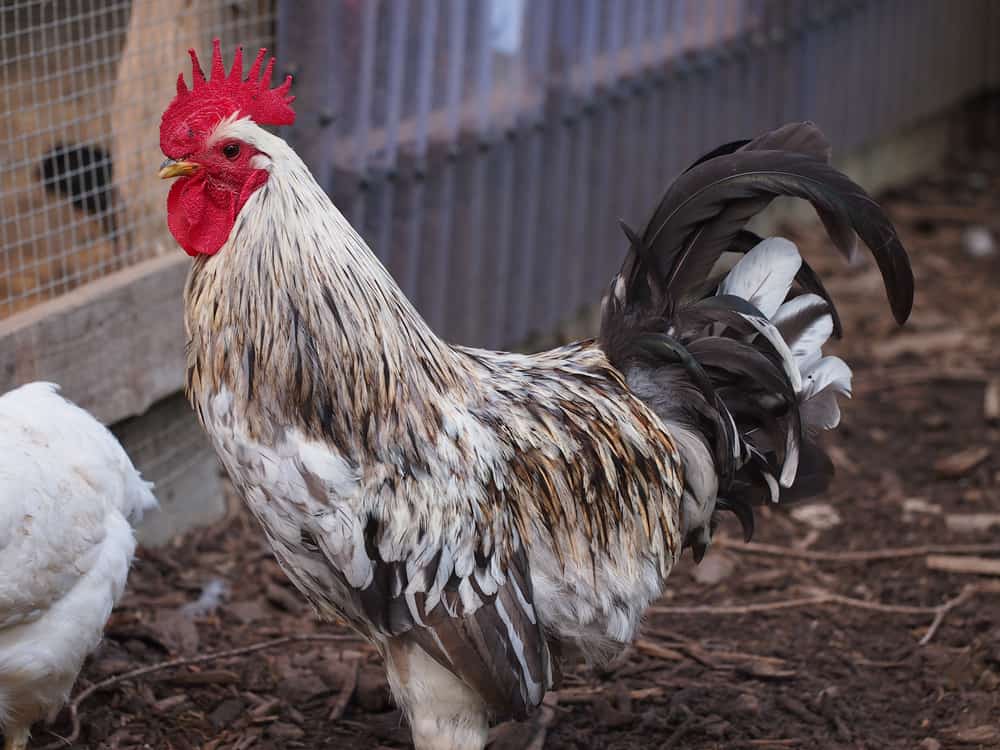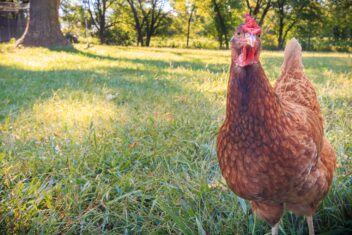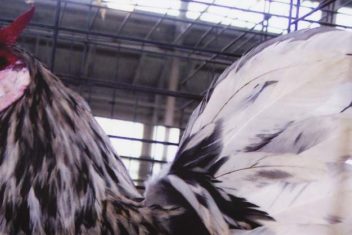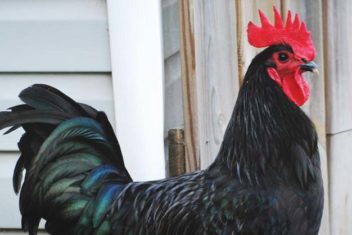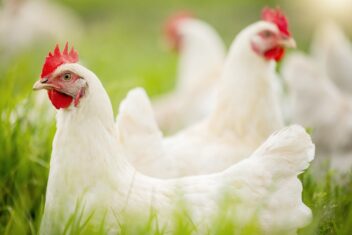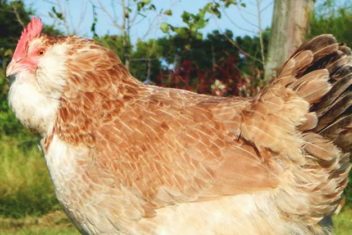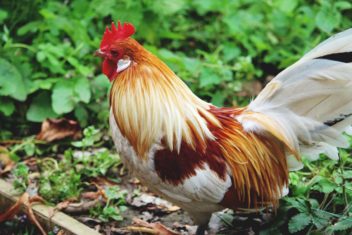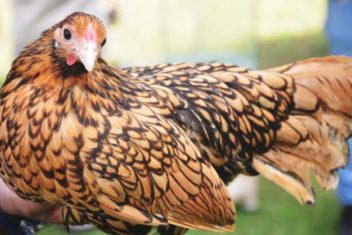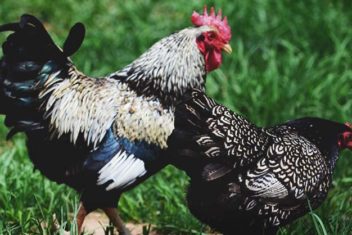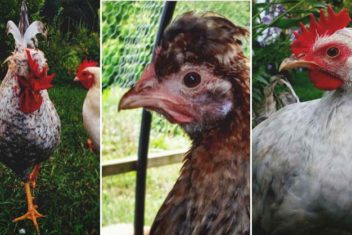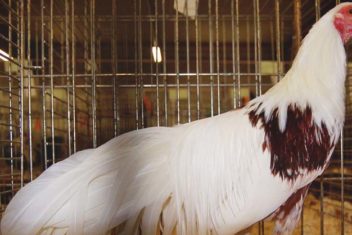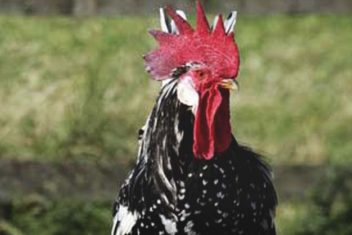Isbar chickens are stunning, powerhouse layers. This relatively new and unfinished breed was explicitly developed as a layer that consistently produces green eggs. Unlike olive eggers, that color is a set part of their genetics.
That means you can continue to breed Isbar and maintain a self-refreshing flock of green egg-laying chickens.
Along with producing many gorgeous green eggs, Isbars are a beautiful addition to the flock. These birds are small but flashy. While there’s a wide variety in coloration and size, Isbars tend to be some of the smallest birds in the flock, with clean legs and showy feathers.
Isbar Basics

Isbars were developed in the mid-20th century by a chicken breeder in Sweden named Martin Silverudd. He aimed to develop a breed of good, green egg-laying birds with interesting and varied feathering.
He used Rhode Island reds, New Hampshire reds, cream legbars, and Australorps in his breeding program.
Silverudd wasn’t trying to standardize his new breed. In fact, he preferred variety in coloration and size. But in general, Isbars come in black, splash, and the overwhelmingly popular blue types.
Isbars are cold-hardy and easy to raise. They tend towards friendliness but like to engage with people on their own terms.
These birds will cheerfully walk around the yard with you and graciously accept treats from your hand, but they’re rather not be petted or snuggled.
Roosters are rarely aggressive with people, but they take their job seriously and will become aggressive to dogs and cats that attack or seem to threaten their flock.
Coloration
While Isbars don’t have a completed breed standard, they do follow three coloration patterns.
Black types are black all over, as the name implies. Splash types have a white base color, with splashes of blue. The rare blue type is a solid blue color. The blue tone can range from light, grayish-blue to a deeper colored blue.
All varieties have clean legs and medium-sized wattles, and single combs. They rarely grow over six pounds. All varieties consistently lay green eggs.
Auto-Sexing Chicks?
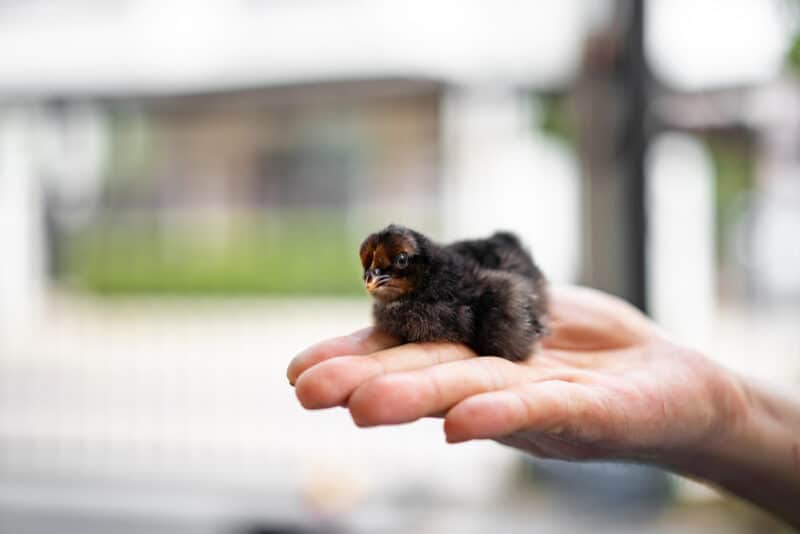
It’s always helpful to know at hatching what you’ve got. Unfortunately, they are not an auto-sexing breed. You can’t tell how many males and females you’ve got until at least 2-3 weeks old unless you’re really good at sexing chicks.
Around 2-3 weeks old, you can start making educated guesses. Males will usually have faster-growing combs that are noticeably larger than females. They may also start showing slightly longer and more pointed tail feathers as their feathers come in.
Egg Production
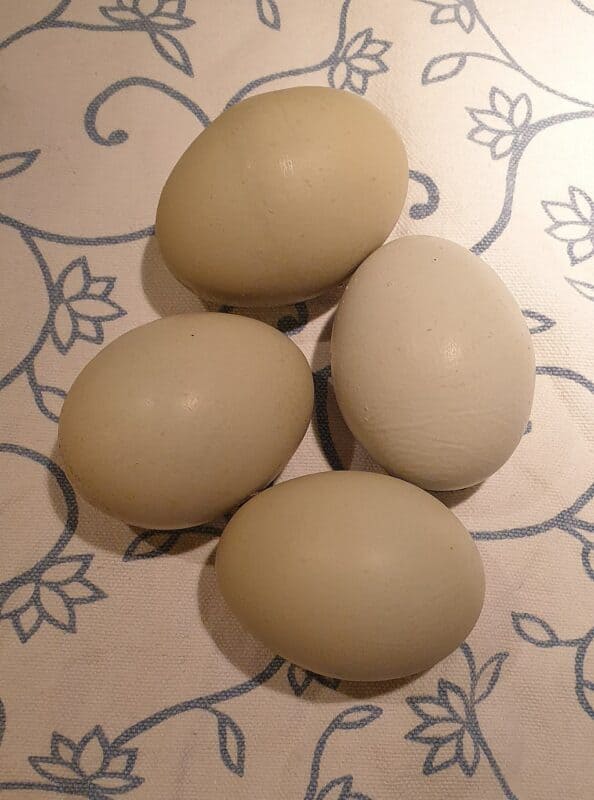
Isbars are an exceptional egg breed. They produce often produce over 230 large eggs each year. They will also continue laying well into the darker winter season. The eggs are almost always green, but occasionally, you’ll get a hen that lays dark brown eggs.
If you want to perpetuate your Isbars as a breed, avoid breeding any hens that don’t lay the breed standard, green egg.
Those green eggs can vary in tone from dark green to soft, mossy green. Occasionally, a hen will produce green eggs with dark brown speckling on the shell. These eggs are always my favorite; they look stunning in the egg basket.
Hens will sometimes go broody, but they’re not good sitters. Even the broody hens tend to lose interest within a week. If you’re hoping to hatch Isbar eggs, you’re better off giving the eggs to a broody hen of another breed or using an incubator.
What About Meat?
Isbars are not good meat birds. Even at their largest, they don’t grow plump and meaty. They tend to produce only a small amount of low-quality meat. If we must butcher any Isbars, they go straight into a stewpot.
Isbar Personality
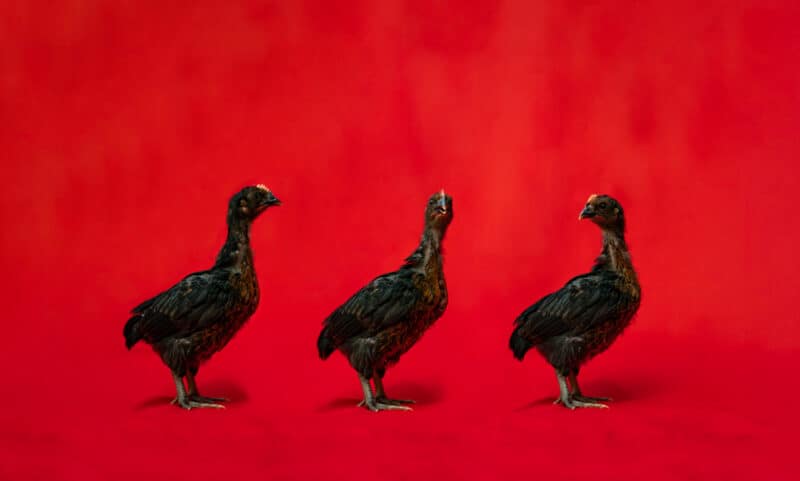
As I mentioned above, they are friendly but with boundaries. They are fine with children, though the roosters can get forceful if a child fails to give them space. I’ve confidently raised these birds around my children, but they’re not as placid as some other breeds.
Isbars can also be a little harsh to new birds in the flock. Introduce new birds slowly to give the Isbars a chance to adjust. Their unwillingness to accept other birds is one reason I don’t keep Isbar roosters anymore.
Because I have four different flocks of birds: geese, ducks, guineas, and chickens, I need roosters that won’t attack my other birds.
In general, these birds are friendly and confident. They’re more patient with people than with other birds and animals, but they’re generally pleasant birds who love having space to wander and interact peaceably with their flock.
Foraging
Isbars are great foragers. They appreciate having plenty of time to scrounge around in for food. They’ll confidently wander far from the coop but generally won’t go too far into dangerous territory, like the woods or the road.
Because they are small, lightweight birds, they can maintain themselves well – with only a little supplementation – if they have enough time and space to forage. The roosters stick with their flock and keep a sharp eye out for predators or neighborhood pets who might threaten their flock.
If you have neighbors with small children or roaming pets nearby, let them know that your roosters are doing their job, to reduce the chance of confrontations.
Health and Wellness
Isbars have a breed tendency toward “inbreeding depression.” This means that their health goes down quickly when they’re inbred. When you purchase chicks, you’ll want to ensure their parents came from two unrelated flocks.
Inbreeding depression can lead to chronic respiratory disease. It can also lead to a lowered immune system in general.
When you raise these birds, keeping the yard clean and reducing their opportunities to come into contact with bacteria or pests is essential. Isbars, even without inbreeding depression, tend towards a lowered resistance to pests and diseases than many other breeds.
If you’re raising these chickens, add new birds occasionally so your flock has more genetic variety.
Isbar Pros and Cons
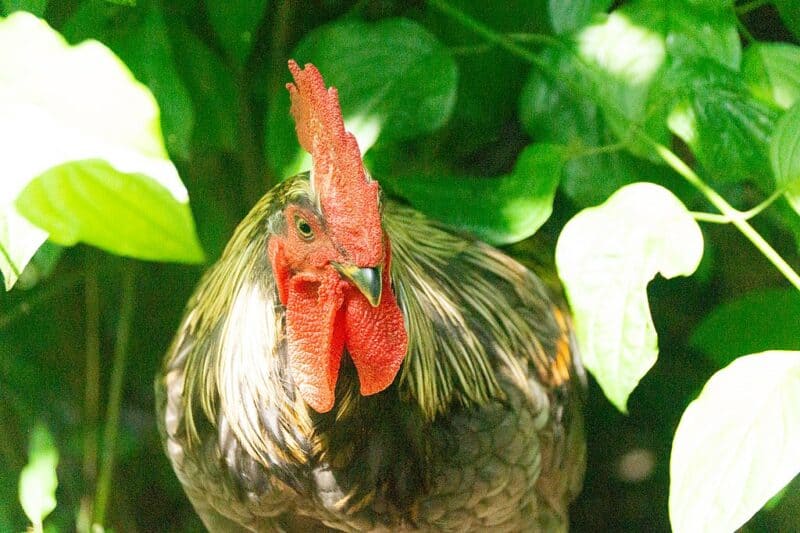
These lightweight, active chickens are a beautiful addition to any chicken yard. They’re sweet birds with beautiful eggs. But a few aspects of the breed might make them less than ideal for your flock. No bird is perfect for everyone, so know what you want in a chicken.
Positives
Isbars are excellent layers. They’ll probably outlay most of your other hens and keep going well into the winter. Since they lay beautiful, green eggs, they’ll boost the color palate of your egg basket perfectly.
Isbars are friendly and sociable. They get along well with their flock and the people they know well. If you’re not looking for a pet chicken, they will be a lovely addition to the hen house.
They are cold-hardy, winter-happy birds. They don’t mind snow as much as many other breeds and can easily handle cold temperatures.
They are cold-hardy enough to be good winter layers. While mine have never laid the whole winter through, they tend to be the last to stop laying in the winter. With a light in the coop, Isbars will likely keep laying long into the winter.
Because they are such good foragers and light birds, Isbars are inexpensive to keep. If you give them time and space to forage, you’re feed bill will be much easier to manage. In a time when feed prices are rising astronomically, the foraging skills of these chickens are beneficial.
These chickens are beautiful. Roosters are gorgeous birds, and the hens are lovely as well. Isbars – especially splash Isbars – are a stunning addition to your flock.
Cons
No bird is perfect, and Isbars are not for everyone.
The biggest problem is, of course, the tendency toward inbreeding depression. They aren’t the strongest or the healthiest breed.
If your yard tends to have chicken pests or bacterial issues, Isbars aren’t for you. If you have a messy barnyard, clean it up before getting Isbars, or wait until you have a handle on the clean-up situation.
They are not dual-purpose birds. Isbars are small, light, and delicately built. Their meat is decidedly sub-par.
These great foragers need a lot of space to stay happy and healthy. This is partly because chickens confined to a run have a higher chance of developing pests or diseases. But primarily, it’s because they need to forage, or they’ll become restless and unhappy.
If you don’t have space for foraging, you should pick a different breed.
Roosters can get aggressive with other animals. If you have a neighborhood cat picking off your chickens, this could be a great point.
But, if you have a friendly dog or multiple flocks of birds, it could become a problem. Isbars are less welcoming to new additions than other bird breeds, and the roosters are decidedly protective of their own flocks.
